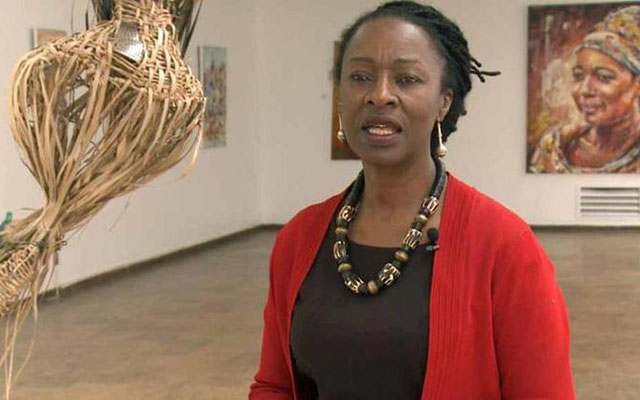NGZ at 60 with Doreen Sibanda

2017 is a very special year for the National Gallery of Zimbabwe particularly the month of July, which will mark the 60th anniversary of the institution. Mrs Doreen Sibanda (DS) takes us through what it means for the Gallery to be celebrating 60 years of incorporation and some of the exciting programmes that are lined up as part of the 60th Anniversary celebrations.
THE NATIONAL GALLERY OF ZIMBABWE (NGZ): What was the purpose of building a museum of Art in Africa?
DS: The idea behind building an art museum such as the National Gallery of Zimbabwe then the Rhodes National Gallery was to mark a certain level of civilisation.
The museum was meant to showcase the best of European art and to consolidate their world view of art and culture with this new found colony.
NGZ: Since it opened has there been any significant shift from that purpose?
DS: Not long after it was opened, it became obvious that rather than just using it as a showcase of the arts and culture of Europe, it would be more prudent to locate and develop the arts and cultures in this country. Within five years there was a new ground swell of art production mainly coming from African artists as well as artist in the settler community. This was fuelled by the first director of the institution Frank McEwen as he saw the raw and natural talent that the locals possessed and sought to promote it. The Galley became a centre for artist training, teaching and still is up to today as we now have the National Gallery School of Visual Art and Design which is recognised under the ministry of Higher and Tertiary Education.
Over the years the Gallery has shifted in the sense that when it first opened it was mainly for the arts interested people, in other words the converted, but over the years it shifted to become a nurturing ground for art and artists and training and teaching. The educational side of it has escalated over the years and since independence it has taken a formal role as opposed to an informal one that was in existence before independence. That was natural because there were very few formal training centres in Zimbabwe for artists so it became a logical progression to offer that nurturing, training promotion. Now the purpose has changed as we are pushing local and promoting arts from this country although there is showcasing of arts from other countries as well, but our core day to day business is to support and develop the local artist and the audience amongst the local population.
NGZ: What does the Gallery have lined up for the 60th Anniversary?
DS: This year we are very excited because this gallery is turning 60 which is a milestone achievement and it’s a time of reflection, assessment and celebration. Since the beginning of the year we have been orienting our shows and themes to underscore the celebratory mood that we are in. As part of the anniversary we are going to be renaming some of the gallery spaces in honour of a number of the early artist who contributed to the growth of the gallery and the Zimbabwean art scene such as Bernard Matemera, Lazarus Takawira, Nicolas Mukomberanwa and Thomas Mukarobgwa.
During the actual birthday month that is July, we are going to have a lot of activities that are meat to increase our engagement with the audience. Every Friday during the month of July entrance into the Gallery will be free. We invite members of the public to come in and have tours of current exhibitions in the Gallery and to get to know some of the programs that we.
Also as part of our Corporate Social Responsibility, we are going to host a Fun Day for vulnerable children. The day is just about showing the children a good time, and enabling them to totally forget about any difficulties they have and enjoy themselves. The children will be treated to a variety of fun activities, including tours of exhibitions in the Gallery, Culture Box Workshop, Storytelling and face painting.
The major event will be staging an international conference called the International Conference on African Art and Cultures. This conference will bring together artists, art curators, culturists, directors and collectors from across the globe to map out the future of African art in this constantly changing world. We have had to engage with different members of the corporate world to support us in this cause and we are very grateful for the support that we have gotten so far.
NGZ: What are the Key highlights that have marked the development of the Gallery over the 60 years?
DS: The Gallery has had many key milestones over a span of 60 years. The first key highlight was the International congress of African Cultures held in September 1962. This global event brought together international delegates who were interested in African Art to have discussions over a period of two weeks.
Another key highlight is that we have been able to promote local artists at international platforms. Many artists have gotten invites to showcase their work in other countries such as South Africa, Senegal, USA Australia, and Italy and this is important as it is our mandate to promote local talent at a global level.
More recent highlights are the staging of Zimbabwe Pavilion at the International Olympics of the Art world which is the Venice biennale which takes place after every two years. We are proud to say that Zimbabwe has been able to participate for four editions running. It has brought back international attention to the arts of Zimbabwe and the artists who have participated there have made a quantum leap into higher echelons of the contemporary art world. Also going for the fourth time has given the Zimbabwean Pavilion a sense of stability and it has given people a lot of confidence. It has also inspired other African countries to have a repeated presence and to begin to put some roots there as a consistent pavilions.
NGZ: Considering that there is limited appreciation for art in Zimbabwe, what do you have in store to engage audiences that normally do not visit the Gallery or do not have exposure to visual art?
DS: We are seized with this on a daily basis and we have to meet this challenge head on if we are to remain relevant for the future. Most of our thrust is to engage local people who were not exposed to art growing up so we do quite a lot of programs like the Adult Art classes. We also work with children because they are more receptive. We are particularly happy because art is now recognised in the new curriculum as an important field of study which will draw people`s attention to seeing art as an important pillar of knowledge.
NGZ: What will the NGZ need to do over the coming years to remain relevant in the world of arts and culture?
DS: We still have a huge role to play in the visual arts of Zimbabwe and we plan on increasing training, exposure and professional art representation for young artist because they are the future. The persistence and the visibility partnered with the new art curriculum will make sure that there are more young people who opt for study in that area of knowledge and that will increase our baseline in terms of new research and analysis from across the board.
We are very grateful to the corporates and embassies that have been supporting us over the years. We sincerely thank them because without them it would not have been possible for us to reach 60 years of promoting local art talent. The 60th is a significant moment which provides an opportunity to draw more attention to us and we will be animating the place to draw many people into the Gallery. Doreen Sibanda has been active in the Visual Arts Sector in Zimbabwe for over 30 years.
She started in 1981 as the Education Officer at the National Gallery of Zimbabwe and in 2004, Sibanda became the National Gallery`s Executive Director, the position she currently holds. During 2011, 2013, 2015 and 2017 she was the commissioner of the Zimbabwe Pavilion at the Venice Biennale in Italy. She has authored several publications including Zimbabwe Stone Sculpture, A Retrospective 1957- 2007, co-authored National Gallery of Zimbabwe celebrating 50 years, 1957-2007, and has authored numerous articles in various local and international publications.







Comments